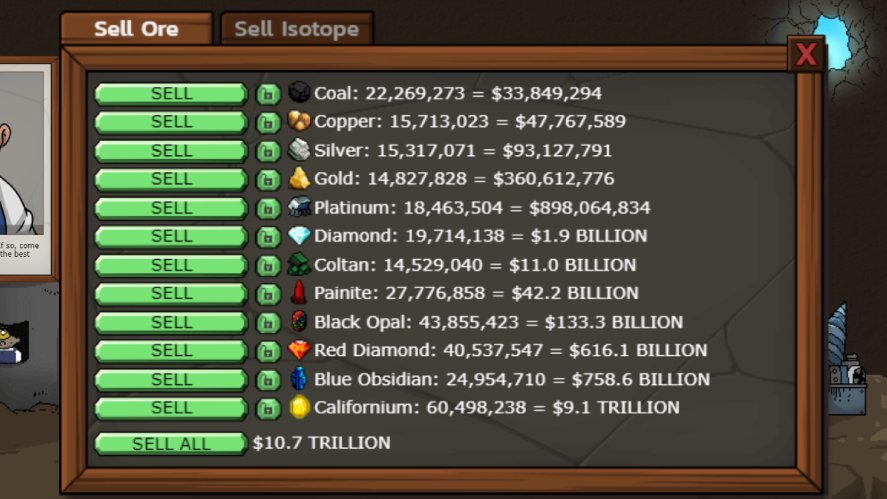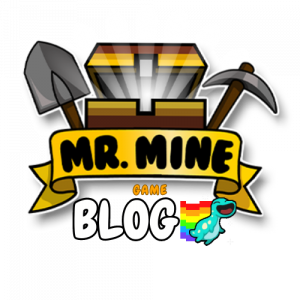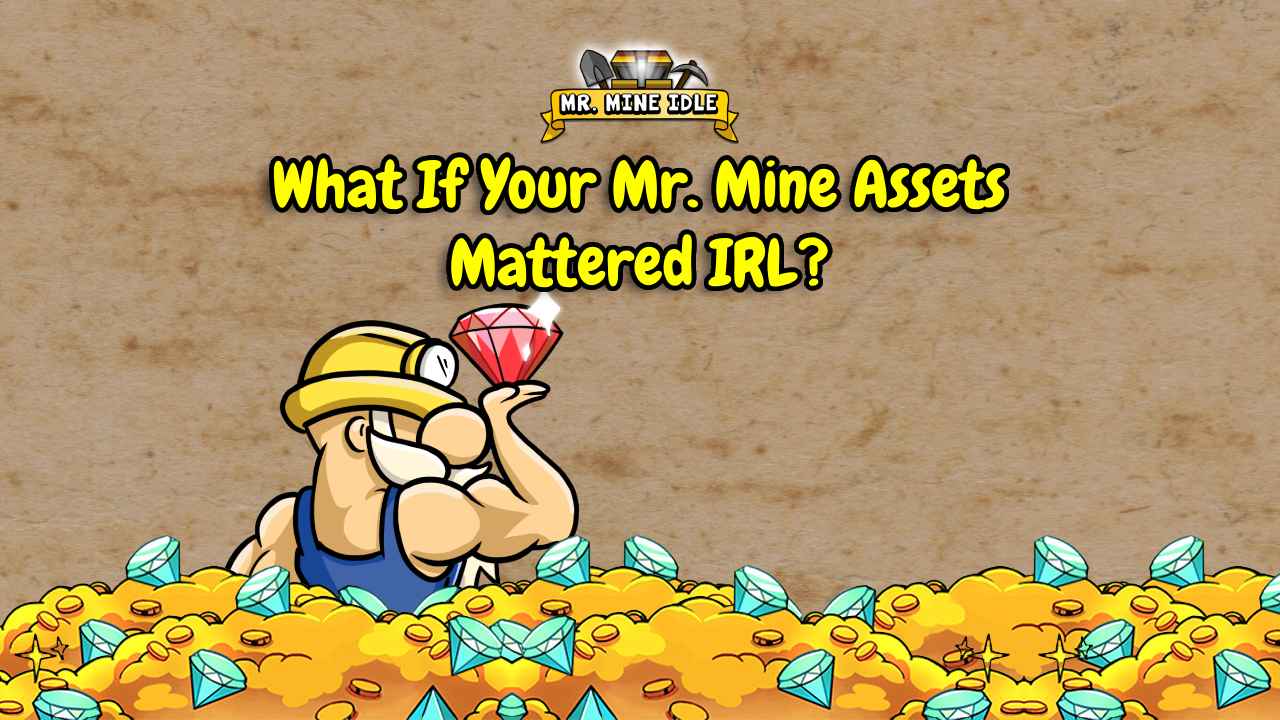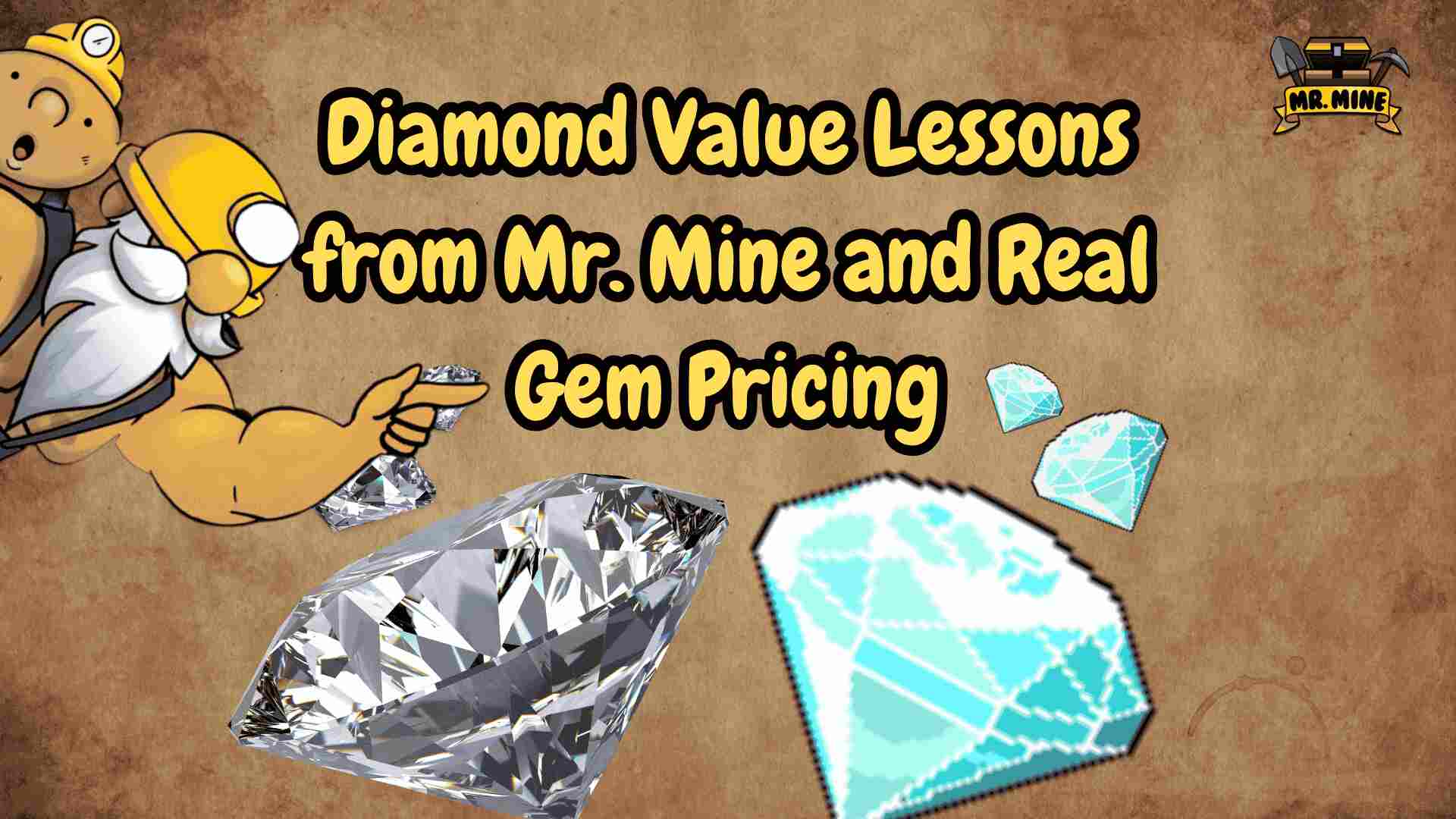Imagine loading up your cart in Mr. Mine with piles of gold, sparkling diamonds, and rare isotopes. It feels like you’ve struck it rich in this addictive gold mine game.
But what if those in-game resources had real-world value? Would you be a millionaire, or even a billionaire?
Mr.Mine, like many incremental games, is all about mining your way to massive wealth.
But behind the pixelated sparkle lies an interesting question: how do these fictional riches stack up against actual market prices?
Let’s dig into the numbers and compare Mr. Mine assets with their real-world counterparts.
How Does Mr. Mine Value Its Resources?
In Mr. Mine, your mining empire grows as you dig deeper and collect increasingly rare materials. Each resource has a set sell price at the Sell Center, fueling your upgrades and progression.
Here’s how some of the most iconic resources are valued in-game:
| Mineral/Isotope | Depth Found | In-Game Price |
|---|---|---|
| Coal | 0 km | $1 |
| Copper | ~4 km | $2 |
| Silver | ~13 km | $4 |
| Gold | ~17 km | $16 |
| Platinum | ~21 km | $32 |
| Diamond | ~30 km | $64 |
| Coltan | ~45 km | $500 |
| Painite | ~60 km | $1,000 |
| Black Opal | ~79 km | $2,000 |
| Red Diamond | ~80 km | $10,000 |
| Blue Obsidian | ~93 km | $20,000 |
| Californium | 305+ km | $100,000 |
| Uranium | ~24 km | $100 – $50,000 |
| Plutonium | ~34 km | $1,000 – $500,000 |
| Polonium | ~54 km | $5,000 – $50,000,000 |
These prices help drive the pacing and excitement of the gold mining games PC.
Early resources like coal and gold are modest, while deep-earth finds like californium skyrocket in value, creating that addictive sense of progress so key to mining games online.
Real-World Prices: From Coal to Californium
When we look at real-world markets, the value of these same resources paints a very different picture.
| Resource | Real-World Price (Jun 2025) | Price Per Gram |
|---|---|---|
| Coal | ~$104 per metric ton | ~$0.000104 |
| Copper | ~$4.82 per pound | ~$0.01062 |
| Silver | ~$36.387 per ounce | ~$1.17 |
| Gold | ~$109 per gram | ~$109 |
| Platinum | ~$1256 per ounce | ~$40.38 |
| Diamond | ~$3,925 per carat | ~$19,625 |
| Coltan | ~$30-75 per kg | ~$0.03–0.075 |
| Painite | ~$60,000 per carat | ~$300,000 |
| Black Opal | ~$9,803 per carat | ~$49,015 |
| Red Diamond | ~$1 million per carat | ~$5,000,000 |
| Blue Obsidian | N/A | N/A |
| Californium | ~$27 million per gram | ~$27,000,000 |
| Uranium | ~$70.05 per pound | ~$0.00062 |
| Plutonium | ~$6.49 million per kg | ~$6,490 |
| Polonium | ~$1.4 trillion per ounce | ~$49.39 billion |
So, how do these compare to MrMine?
- Coal in-game is wildly overpriced at $1 per unit versus a real-world $0.000104.
- Gold is undervalued, with $16 in-game compared to $109 per gram in real life.
- Diamonds in-game are dramatically undervalued compared to real gem-quality stones.
- Californium, though priced at just $100,000 per unit in-game, pales in comparison to its real-world counterpart.
- In-game isotopes like Plutonium and Polonium are priced far below their real-world values, highlighting the miner game’s simplified approach to nuclear materials.
This contrast highlights how gold mining games like Mr. Mine play fast and loose with economics, favoring player experience over market realism. It’s part of the fun.
Translating Mine Game Units into Real Dollars
Ever wonder how rich you’d be if your Mister Mine stash turned into real-world cash? Let’s run the numbers and compare in-game prices with actual market values as of June 2025.
To make things simple, we assume:
- 1 in-game unit = 1 gram
- We use the latest average market price per gram (or convert it ourselves from carats, ounces, pounds, etc.)
- Then, we compare in-game values with real-world equivalents.
Let’s say you have the following resources in Mr. Mine:
| Resource | In-Game Amount | In-Game Value | Real-World Price/Gram | Real-Life Value |
|---|---|---|---|---|
| Coal | 10,000 | $10,000 | $0.000104 | ~$1.04 |
| Copper | 5,000 | $10,000 | $0.01062 | ~$53.1 |
| Silver | 2,000 | $8,000 | $1.17 | ~$2,340 |
| Gold | 1,000 | $16,000 | $109 | ~$109,000 |
| Platinum | 500 | $16,000 | $40.38 | ~$20,190 |
| Diamond | 100 | $6,400 | $19,625 | ~$1,962,500 |
| Coltan | 300 | $150,000 | ~$0.05 (avg) | ~$15 |
| Painite | 50 | $50,000 | $300,000 | ~$15,000,000 |
| Red Diamond | 2 | $20,000 | $5,000,000 | ~$10,000,000 |
| Californium | 1 | $100,000 | $27,000,000 | ~$27,000,000 |
| Uranium | 100 | $5,000,000 | $0.00062 | ~$0.062 |
| Plutonium | 5 | $2,500,000 | $6,490 | ~$32,450 |
| Polonium | 1 | $50,000,000 | $49.39 billion | ~$49,390,000,000 |
In the end, you have:
- Total In-game Value: ~$57.8 million
- Total Real-World Value: ~$50 billion (which is roughly x1000 your in-game value)
Despite some humble beginnings with coal and copper, rare minerals like painite, red diamonds, californium, and especially polonium skyrocket your real-life valuation.
Example Wealth Scenarios in The Mine Game
Let’s crunch some more numbers using real market prices.
Scenario A: The Mine Game Casual Clicker
Let’s say you’ve mined modest amounts during your lunch breaks in mining games for free:
- 5,000 Gold
- 3,000 Silver
- 1,000 Diamonds
- 500 Coal
- 100 Californium
In-game, that stash is worth $10.156 million. Sounds impressive, until you convert it to real-world value. In reality? It’s over $2.73 billion, with Californium alone contributing a staggering $2.7 billion.
Scenario B: The Hardcore Miner
Now imagine you’ve been playing for months, automating shafts and stacking resources:
- 10 million Gold
- 5 million Diamonds
- 1 million Coltan
- 50,000 Californium
- 100 Uranium
In-game, that stash adds up to $5.985 billion. Impressive, right? But when you convert it to real-world value, it skyrockets to around $1.449 trillion.
That’s “buy your own country” money. It’s more than the GDP of some small nations.
Why Mr. Mine Overstates Its Wealth
So why the inflation? It’s simple! It’s all about the fun.
Free mining games like Mr. Mine are designed to give players a sense of massive progression. You start with coal and pennies, then eventually rake in trillions. These inflated values:
- Reward players with exponential satisfaction
- Create exciting upgrade milestones
- Fit the idle/incremental game formula

In the real world, resource extraction involves costs, politics, and environmental impact.
But in Mr. Mine, it’s all about joyfully watching numbers explode—an addictive thrill ride powered by exaggerated wealth.
Turn Gameplay into Real-Life Lessons
While Mr. Mine thrives on exaggerated values and idle satisfaction, it also sneaks in a few powerful real-world lessons.
Beneath the pixels and upgrades are deeper concepts worth digging into:
- Scarcity matters: Just like in real markets, rarer minerals fetch higher prices. Whether it’s californium or diamonds, limited supply drives value.
- Investment has returns: Spending resources on better drills or managers mirrors real-world decisions, where reinvesting leads to greater yield over time.
- Economics made fun: Watching assets grow teaches players concepts like inflation, resource depreciation, and opportunity cost, without a single lecture.
These mechanics can inspire curiosity about geology, natural resources, and economics. If a game can get you thinking about supply chains or global gold pricing, that’s a win.
Try It Yourself: Mr. Mine Wealth Calculator

Mr. Mine Resource Calculator
Conclusion
You won’t be cashing out your Mr. Mine resources anytime soon, but that’s not the point.
The real wealth of the space mining game lies in curiosity, strategy, and the sense of endless progression. It turns geology into an idle mining game, economics into excitement, and upgrades into lessons about value.
Whether you’re chasing californium or just enjoying the clicks, Mr. Mine proves that even idle games can leave a lasting impression.
So dig deep, think big, and maybe come away a little better than when you started.
Related Content & References
- https://goldprice.org
- https://tradingeconomics.com
- https://www.stonealgo.com
- https://trade-metal.com
- https://www.opalsdownunder.com.au
- https://www.businessinsider.com
- https://alansfactoryoutlet.com
- https://www.astronomy.com






